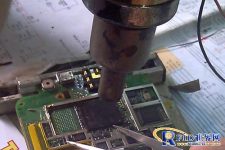
Dixons Carphone uses RFID system to track the status of mobile phones under repair
[ad_1]
The Dixons Carphone Group, Europe’s largest mobile phone retail service provider, is deploying an RFID system in its logistics center in England to manage smartphone repairs.
The company’s CPW logistics center handles thousands of mobile phones and tablets every day. The center can handle various touch screen replacement and other maintenance services. Equipment tracking is a complicated task. Three months ago, the company deployed the British RFID technology company TrackerPoint system to simplify everything.In this program, the company will UHFRFIDThe label is attached to the box containing the malfunctioning mobile phone. At the same time, the company has deployed multiple RFID readers throughout the workshop to track work-in-progress and ensure that mobile phones are not lost. In addition, TrackerPoint’ software can also analyze the read data for employees and consumers to view.

In August of this year, Dixons Retail and Carphone Warehouse Group merged to form Dixons Carphone Group. When a consumer at any Dixons Carphone store encounters an after-sales problem, he can go to any store for repairs.
Recently, Dixons Carphone launched a new repair service (to ensure the completion time of repair work). Parmjit Kumar, Quality Assurance Manager of CPW Logistics Center, said: “RFID technology helps us automate and track the repair process throughout the process.”
Before adopting this solution, Carphone Warehouse had already studied the automated tracking systems of several supply rooms. Finally, due to independence, good RFID experience and flexibility, the company chose the TrackerPoint solution.
The company needed a solution that could track thousands of products at the same time. Kumar said this requires the solution to have automated, real-time repair tracking capabilities. In this way, it can be guaranteed to be delivered to consumers within the promised time.
The CPW logistics center receives handheld devices from other manufacturers including iPhone, Samsung, and Nokia every day. At the same time, it is also the largest repair center for mobile phones and tablets in the UK. After receiving the equipment, the employee will place the equipment in the box and send it to the repair station for repair. The purpose of box installation is to prevent electrostatic breakdown. Before the deployment of the RFID system, the tracking of equipment and boxes was done manually.
TrackerPoint account manager Georgina Evans explained that the RFID tag of each box has a unique ID number, which is bound to the information of the device and the address of the consumer. Evans said: “The label has gone through multiple rounds of testing and can work well in this type of environment.”
In order to track the location and movement of these boxes and their internal machines, Dixons deployed Feig Electronics UHF RFID at different sitesReader. When the mobile phone passes the site, the reader will capture the ID number of the tag on the box and upload it to the Dixons backend server. After processing, the data will be displayed on the workshop map of the TPView software, so that the manager can view the machine status in real time.
In addition, these data will be shared with consumers. Consumers can log on to Dixons Carphone’s maintenance tracking website to view these data. In this way, consumers can know the status of the equipment and the estimated repair time in real time.
Kumar said: “The system did not live up to our hopes, and we are quite satisfied with the results of the implementation. The system reduces the operating turnaround time.” In the future, the company will also use RFID systems in other businesses.
(Exclusive manuscript of rfid world network, please indicate the source author for reprinting!)
[ad_2]



